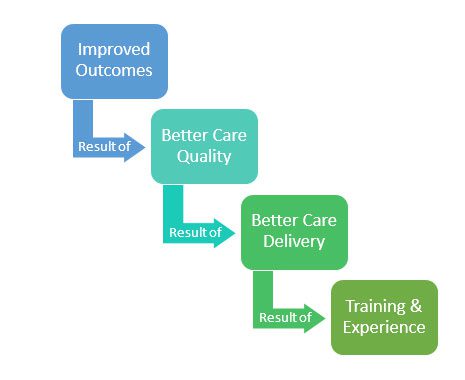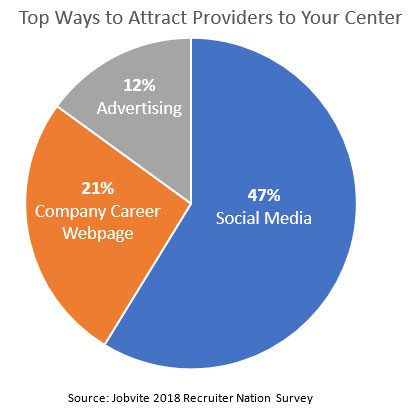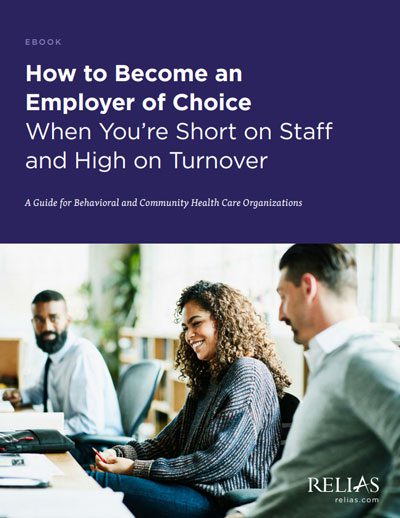When it comes to attracting healthcare practitioners, community health centers in rural and medically underserved communities have the odds stacked against them. Individuals in these communities face a variety of healthcare access barriers, which are weaved into the already problematic U.S. healthcare staff shortage crisis and soaring turnover rates.
To keep a steady foothold in the future of healthcare, you need to employ enough healthcare professionals to meet the needs of your community, which means you may have to identify new approaches to the way you attract, hire and retain primary care physicians, physician assistants, dentists, pharmacists, LPNs, RNs, CNAs, psychiatrists and other healthcare workers.
How do you do this? The first step is to become familiar with what is being done at the state and federal levels to help support your efforts. The next step is to use that information to develop a new strategy to attract providers to your facility.
State and federal support options for recruiting professionals to medically underserved communities
The issue of not being able to attract care providers to rural community health settings is not new. As a result, state and federal programs, policies and strategies have been designed to improve the supply of rural health professionals, a few of which are listed below.
Type |
Options |
State-Level Policies & Programs |
|
Healthcare Education
|
|
Rural Healthcare Facilities
|
|
Foreign Medical Graduates
|
|
Federal Policies & Programs
|
|
Technical Assistance |
|
The struggles you encounter in sustaining your workforce negatively impact patient care and your ability to meet staffing requirements for your center. Therefore, it is essential to be proactive as you develop your new strategy—which begins with knowing what you want.
Determine your end goal
Before placing a job ad, think about the goal behind the role. If you want to improve patient outcomes at your clinic, think about which patients, conditions, disorders or diseases you treat most often in the medically underserved communities you work with. From there, work backward to better identify what you need to improve patient outcomes. For example, better outcomes are the result of better care quality. Better care quality is the result of better care delivery, which is the result of the right training and experience. Reverse-engineering your goal makes it easier to determine the role you need, the nonnegotiable skills and characteristics you require for the role, and the requirements that can be learned on the job.

After you determine the required skills and traits for the role you want to hire, do some research to find out what practitioners would want from a role located in a rural community that might require extensive travel, and therefore, less time at home. Ask your current staff what attracted them to your facility and what keeps them there. This is also a good question to ask individuals who apply for or contact you about the role.
Finally, look at the careers webpages of other rural community health centers and find out what they are doing to attract physicians and other healthcare professionals. You might be surprised by small improvements you can make to increase your applicant pool, whether that means covering gas mileage or offering a more flexible work schedule.
Know how to market your jobs
Because attracting candidates is becoming more difficult, the way organizations advertise and promote their jobs has changed. Many employers either require recruiters to have marketing experience, and others invest in dedicated recruitment marketing roles to build and promote an “employer brand.”
It makes sense. In today’s job market, employers no longer advertise that they have XYZ roles available with XYZ requirements. Instead, they promote an experience using storytelling—and it works. Cognitive psychologist Jerome Bruner has found that messages delivered as stories can be up to 22 times more memorable than just facts.

For example, let’s say you need to hire a dedicated primary care physician. In your job ad, you would tell the story of your rural community health clinic, the obstacles you and your patients face without having a primary care physician, and the ways in which the role can impact medically underserved communities. Storytelling does three things:
- Engages the job seeker while providing meaningful information
- Helps them envision how they can “fit in” at your clinic
- Motivates them to apply for the role
While it might be unlikely for rural community health centers to receive budget dollars for a recruitment marketer, there are things you can do to attract more applicants without hiring a marketing professional.
Improve your job ads
To successfully market your job vacancy, you need to have a depth of knowledge about your facility and your target audience (community health workers). The goal is to communicate the story of your mission, culture and benefits in a way that attracts the right job seekers and keeps them engaged enough to apply.
To create an engaging job ad, consider these tips:
- Demonstrate the link between the job and its impact on patients in the medically underserved communities you work in
- Accentuate unique perks or benefits you offer, or consider adding new ones
- Include a role-specific “day in the life of” video or text
- Add quotes from your primary care physicians, physician assistants, dentists, pharmacists or nurses about their favorite part of the job
- Offer continuing medical education to your clinicians at no cost to them
- Describe the workplace culture and atmosphere
Find alternative ways to promote your jobs
If you only use job boards like Indeed, Monster, or Careerbuilder, you may miss out on finding quality candidates. Try to advertise your open roles using other methods, too. For example:
- Social media
- Local associations
- Colleges and universities
- Referrals from your existing staff
- Announcements at public events
Taking the time to craft an engaging job ad and using a variety of methods to promote it can make a noticeable difference in the amount and quality of applicants you attract to jobs in medically underserved communities.
For an in-depth walkthrough—complete with helpful templates and worksheets—on how to attract and retain highly skilled rural community health practitioners, download the free guide below.

Free Guide: How to Become an Employer of Choice When You’re Short on Staff and High on Turnover
The staff shortage crisis and soaring turnover rates in the healthcare industry is creating a demand for employers to re-examine the way they attract, hire, onboard and develop staff. This guide—complete with worksheets and practical tools—includes four actionable steps behavioral and community health centers can take to improve current strategies and become an employer of choice.
Download the Guide →





